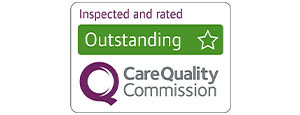As Head of IT at ellenor, Mike wears many hats.
Creating budgets; setting ellenor’s IT strategy; managing the hospice charity’s array of IT vendors and suppliers; securing its sensitive patient data from leaks and misuse.
It’s a complex set of responsibilities. But for Mike, his role – and IT’s role within a charity – has a simple, yet profound, function.
“My role,” he explains, “is to make sure our staff have the right equipment, in the right place, to do their job well."
We have so many wonderful people on our frontline, working with patients and their families day in, day out, and an army of back office people: be they HR, PR, marketers, or our lovely fundraisers.
- Mike, ellenor's Head of IT
“All of them, in one way or another, depend on IT. But IT is in the organisation to support it – not drive it. I’m simply that backstop, providing the support and systems our teams need to be able to make the positive impact they do every day.”
How important is IT for supporting ellenor’s staff?
And, through them, the patients and families the charity cares for?
“IT is everything behind the care; behind the scenes,” Mike explains. “It’s not just the laptops, or the monitors. It’s the telephone systems; mobile phones for our field-based teams; our patient records system; databases for our supporters, and for maintaining the relationships we have with other local hospices and organisations.”
Every time a phone rings at ellenor, with a family member asking after their loved one, IT makes the conversation possible. Every time a nurse arrives at a patient’s home in the community – already equipped with the patient’s name, and key details about their profile and condition – IT has enabled that quick-fire exchange of information.
And Mike enables that IT – the rapid, reliable infrastructure upon which ellenor’s entire range of services is built and supported on. But it wasn’t always that way.
When Mike arrived at ellenor – first as a volunteer, working two days a week – ellenor’s systems were old. Outdated. Becoming unsupported and slow.
“Previously, ellenor’s IT methods and solutions were quite clunky,” Mike explains. “Remote staff had to connect back to ellenor from outside the building to access their emails, patient records and other key information (all of which was maintained on site). Many other systems were also ill-equipped for remote access.”
Mike’s remit? To bring ellenor’s IT setup into the 2020s. But this, of course, meant dealing with the thing that, so far, has defined that decade – the COVID-19 pandemic.
“COVID-19, from an IT standpoint, was extremely challenging” says Mike, “because we really weren’t set up to quickly mobilise our staff. We have teams out in the community who are set up with laptops and phones to support the field-based critical services they provide. But when the pandemic hit, there were suddenly a lot of other departments that didn’t have the equipment they needed to work from remotely.”
The response? Migrating many of ellenor’s core IT services to be cloud based empowering staff with seamless but managed access to the data and tools they rely on. Embracing the cloud and ensure ensuring all ellenor staff’s devices are encrypted, traceable, and safeguarded against data breaches and unauthorised access attempts was key to this transformation.









